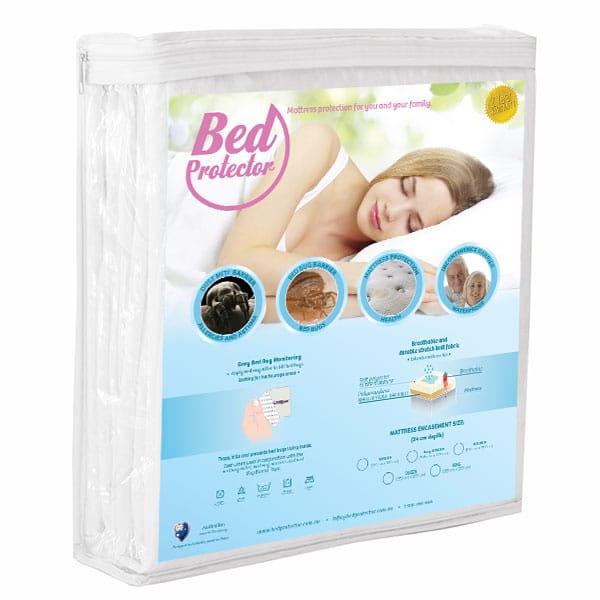
In the article
Ever wake up to find a spill or stain on your bed and think, How can I make my bed waterproof? I get it; accidents happen. From spilled drinks to pet mishaps or bedwetting with kids, a waterproof bed is a game-changer.
Whether you want a quick fix or a long-term solution, I’ve got you covered. Let’s dig into some practical options and tips that actually work.
Types of Waterproof Mattress Protectors: What Works Best?
When it comes to keeping a bed dry, a good waterproof mattress protector is a top choice. But with so many types out there, which one is right for you?
- Fitted Sheets – These cover the mattress but not the sides. Quick to put on, easy to remove, but they might not handle heavy spills.
- Encasement Protectors – A full waterproof mattress cover that zips up and seals your mattress from all sides. This offers complete protection, ideal if you’re dealing with regular spills or incontinence.
- Waterproof Mattress Pads – Great for adding a soft, cushioned layer while protecting against moisture. A good choice for comfort and coverage.
And then, there’s the material. Look for options like TPU (thermoplastic polyurethane) if you want eco-friendly and long-lasting waterproofing.

Waterproof Mattress Cover
DIY Waterproofing Solutions for Quick Fixes
How Can I Make My Bed Waterproof?
Need something right now? Here are a few DIY tricks to make your bed waterproof without needing new products.
- Plastic Sheets or Shower Curtains – Slide a plastic sheet or shower curtain under your bedsheet. It’s quick and budget-friendly, but can feel a bit crinkly.
- Waterproof Spray – For a temporary fix, waterproof sprays work on some fabrics to repel moisture. Be sure to read the instructions; some sprays are better suited for outdoor furniture.
These might not be perfect, but they’ll get you by in a pinch.
Best Waterproof Bed Covers for Children, Pets, and Incontinence
When you’re protecting against bedwetting, pet accidents, or spills from kids, durability and comfort are key.
- Waterproof Mattress Encasements – Full coverage to keep everything out, no matter what happens.
- Noiseless Waterproof Protectors – Because no one wants that crinkling sound every time they move. Look for quiet options that don’t trade off comfort for protection.
- Reusable Absorbent Pads – These are great for layering on top of your mattress protector. Absorbs any accidents and washes easily. Plus, you can move it around wherever needed.
Organic options, like Bed Bug Barrier’s waterproof covers, add an extra layer of assurance without chemicals or irritation—ideal for kids and pets.
Breathability and Comfort in Waterproof Bedding
How Can I Make My Bed Waterproof?
If you’re thinking waterproof means sweaty and uncomfortable, think again.
The latest waterproof protectors now come with breathable layers, letting air in but keeping water out. Here’s what to look for:
- Moisture-Wicking Fabrics – These are often used in activewear but are now available in mattress protectors, pulling sweat away from your skin.
- Natural Fibers – Materials like cotton combined with waterproof layers provide a barrier without that rubbery feeling.
So, if you’re worried about overheating, choose a protector that mentions “breathable” on the label.
Long-Term Care and Maintenance of Waterproof Bedding

Making your bed waterproof is only half the battle; keeping that protection intact is just as important. Here’s what works:
- Wash Regularly – Use a mild detergent. Avoid bleach; it breaks down waterproof materials.
- Air Dry – Many waterproof layers are sensitive to heat. Air drying (or low heat in the dryer) keeps your protector working longer.
- Check for Cracks or Worn Spots – Over time, any protector will wear down. Replace it as soon as you notice it’s less effective.
With these simple steps, you’ll get long-term value and protection from your investment.



Leave a Reply